Статьи журнала - Компьютерная оптика
Все статьи: 2511
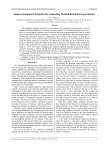
Renewed empirical formulas of Weibull distribution parameters estimates
Статья научная
The empirical formulas proposed in the literature for estimating the parameters of a two-parameter Weibull distribution, obtained using the equations of the moment method, are considered. It is noted that the formulas used to estimate the shape parameter take the form of various types of dependences on the coefficient of variation of the distribution. By modeling the empirical formulas selected for analysis, a comparative analysis of their errors relative to accurate numerical solutions of the moment method equations was carried out. A renewed empirical formula for the shape parameter is proposed. An approach to estimating the scale parameter is proposed, in which the empirical formula of the latter is reduced to the product of the standard deviation of the distribution by a power function of the coefficient of variation with an exponent equal to – 1.027. The results of applying the updated empirical formulas to numerical data obtained by modeling a random sample from the Weibull distribution are presented. It is shown that the accuracy of the proposed empirical formulas is quite high.
Бесплатно
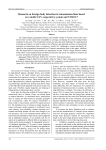
Статья научная
The unique plateau geographical features and variable weather of Yunnan, China make transmission lines in this region more susceptible to coverage and damage by various foreign bodies compared to flat areas. The mountainous terrain also presents great challenges for inspecting and removing such objects. In order to improve the efficiency and detection accuracy of foreign body inspection of transmission lines, we propose a multi-UAV collaborative system specifically designed for the geographical characteristics of Yunnan's transmission lines in this paper. Additionally, the image data of foreign bodies was augmented, and the YOLOv7 target detection model, which offers a more balanced trade-off between precision and speed, was adopted to improve the accuracy and speed of foreign body detection.
Бесплатно
Research on robot motion control and trajectory tracking based on agricultural seeding
Статья научная
With the development of science and technology, agricultural production has been gradually industrialized, and the use of robots instead of humans for seeding is one of the agricultural industrializations. This paper studied the seeding path planning and path tracking algorithms of the seeding robot, carried out experiments, and compared the improved proportion, integral, differential (PID) algorithm with the traditional PID control algorithm. The results demonstrated that both the improved and non-improved control algorithms played a good role in tracking on the straight path, but the improved control algorithm had a better tracking effect on the turning path; the displacement deviation and angle deviation of the tracking trajectory of the improved PID algorithm were reduced faster and more stable than the traditional PID algorithm; the tracking trajectory was shorter and the operation time of the robot was less under the improved PID algorithm than the traditional one.
Бесплатно
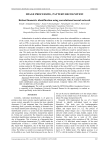
Retinal biometric identification using convolutional neural network
Статья научная
Authentication is needed to enhance and protect the system from vulnerabilities or weaknesses of the system. There are still many weaknesses in the use of traditional authentication methods such as PINs or passwords, such as being hacked. New methods such as system biometrics are used to deal with this problem. Biometric characteristics using retinal identification are unique and difficult to manipulate compared to other biometric characteristics such as iris or fingerprints because they are located behind the human eye thus they are difficult to reach by normal human vision. This study uses the characteristics of the retinal fundus image blood vessels that have been segmented for its features. The dataset used is sourced from the DRIVE dataset. The preprocessing stage is used to extract its features to produce an image of retinal blood vessel segmentation. The image resulting from the segmentation is carried out with a two-dimensional image transformation such as the process of rotation, enlargement, shifting, cutting, and reversing to increase the quantity of the sample of the retinal blood vessel segmentation image. The results of the image transformation resulted in 189 images divided with the details of the ratio of 80 % or 151 images as training data and 20 % or 38 images as validation data. The process of forming this research model uses the Convolutional Neural Network method. The model built during the training consists of 10 iterations and produces a model accuracy value of 98 %. The results of the model's accuracy value are used for the process of identifying individual retinas in the retinal biometric system.
Бесплатно
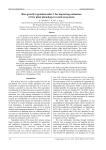
Rice growth vegetation index 2 for improving estimation of rice plant phenology in costal ecosystems
Статья научная
Crop growth is one of the most important parameters of a crop and its knowledge before harvest is essential to help farmers, scientists, governments and agribusiness. This paper provides a novel demonstration of the use of freely available Sentinel-2 data to estimate rice crop growth in a single year. Sentinel 2 data provides frequent and consistent information to facilitate coastal monitoring from field scales. The aims of this study were to modify the rice growth vegetation index to improve rice growth phenology in the coastal areas. The rice growth vegetation index 2 is the best vegetation index, compared with 11 vegetation indices, plant height and biomass. The results demonstrate that the coefficient of rice growth vegetation index 2 was 0.83, has the highest correlation with plant height. Rice growth vegetation index 2 is more appropriate for enhancing and obtaining rice phenology information. This study analyses the best spectral vegetation indices for estimating rice growth.
Бесплатно
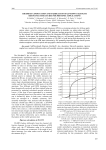
Статья научная
The use of metal 2D subwavelength structures (SWS) is a promising solution for all those applications where a selective emission from a thermal source is desirable, e.g. photovoltaic and blackbody emission. The investigation of the SWS' photonic bandgap properties is challenging, especially for the infrared and visible spectrum, where the fabrication difficulties have always represented an obstacle. In this paper, the anodization of aluminum films as a self-assembly method for the SWS fabrication is proposed. A rigorous calculation of 2D-SWS of gold having high absorptivity in the visible and low-absorptivity in the NIR, their fabrication by DC-sputtering deposition through anodic porous alumina templates, and their optical and topographic characterization are presented. In this paper, the anodization of aluminum films as a self-assembly method for the SWS fabrication is proposed.
Бесплатно
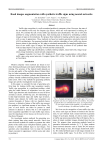
Road images augmentation with synthetic traffic signs using neural networks
Статья научная
Traffic sign recognition is a well-researched problem in computer vision. However, the state of the art methods works only for frequent sign classes, which are well represented in training datasets. We consider the task of rare traffic sign detection and classification. We aim to solve that problem by using synthetic training data. Such training data is obtained by embedding synthetic images of signs in the real photos. We propose three methods for making synthetic signs consistent with a scene in appearance. These methods are based on modern generative adversarial network (GAN) architectures. Our proposed methods allow realistic embedding of rare traffic sign classes that are absent in the training set. We adapt a variational autoencoder for sampling plausible locations of new traffic signs in images. We demonstrate that using a mixture of our synthetic data with real data improves the accuracy of both classifier and detector.
Бесплатно
Robust hybrid technique for moving object detection and tracking using cartoon features and fast PCP
Статья научная
In various computer vision applications, the moving object detection is an essential step. Principal Component Analysis (PCA) techniques are often used for this purpose. However, the performance of this method is degraded by camera shake, hidden moving objects, dynamic background scenes, and / or fluctuating exposure. Robust Principal Component Analysis (RPCA) is a useful approach for reducing stationary background noise as it can recover low rank matrices. That is, moving object is formed by the low power models and the static background of RPCA. This paper proposes a simple alternative minimization algorithm to fix minor discrepancies in the original Principal Component Pursuit (PCP) or RPCA function. A novel hybrid method of cartoon texture features used as a data matrix for RPCA taking into account low-ranking and rare matrix is presented. A new non-convex function is proposed to better control the low-range properties of the video background. Simulation results demonstrate that the proposed algorithm is capable of giving consistent random estimates and can indeed improve the accuracy of object recognition in comparison with existing methods.
Бесплатно
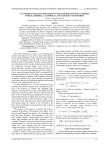
Статья научная
Scattering potentials of hollow particles with ellipsoid-, cylinder- and parallelepiped-like shapes and adjustable edge sharpness are introduced as a difference of two 3D multi-Gaussian functions with suitable parameters. The far-zone intensity distributions generated on weak scattering from such potentials are shown to depend on the scatterer’s boundary thickness, edge softness as well as on its size relative to the wavelength. Possible extension to potentials formed by nested shells of the same or different types and potentials with semi-hollow center is outlined.
Бесплатно
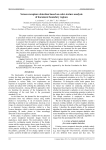
Screen recapture detection based on color-texture analysis of document boundary regions
Статья научная
This paper examines a presentation attack detection when a document recaptured from a screen is presented instead of the original document. We propose an algorithm based on analyzing a moiré pattern within document boundary regions as a distinctive feature of the recaptured image. It is assumed that the pattern overlapping the document boundaries is a recapture artifact, not a match between document and background textures. To detect such a pattern, we propose an algorithm that employs the result of the fast Hough transform of the document boundary regions with enhanced pattern contrast. The algorithm performance was measured for the open dataset DLC-2021, which contains images of mock documents as originals and their screen recaptures. The precision of the proposed solution was evaluated as 95.4 %, and the recall as 90.5 %.
Бесплатно
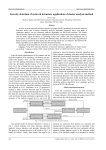
Security detection of network intrusion: application of cluster analysis method
Статья научная
In order to resist network malicious attacks, this paper briefly introduced the network intrusion detection model and K-means clustering analysis algorithm, improved them, and made a simulation analysis on two clustering analysis algorithms on MATLAB software. The results showed that the improved K-means algorithm could achieve central convergence faster in training, and the mean square deviation of clustering center was smaller than the traditional one in convergence. In the detection of normal and abnormal data, the improved K-means algorithm had higher accuracy and lower false alarm rate and missing report rate. In summary, the improved K-means algorithm can be applied to network intrusion detection.
Бесплатно
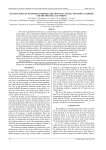
Статья научная
3D mesh segmentation has become an essential step in many applications in 3D shape analysis. In this paper, a new segmentation method is proposed based on a learning approach using the artificial neural networks classifier and the spectral clustering for segmentation. Firstly, a training step is done using the artificial neural network trained on existing segmentation, taken from the ground truth segmentation (done by humane operators) available in the benchmark proposed by Chen et al. to extract the candidate boundaries of a given 3D-model based on a set of geometric criteria. Then, we use this resulted knowledge to construct a new connectivity of the mesh and use the spectral clustering method to segment the 3D mesh into significant parts. Our approach was evaluated using different evaluation metrics. The experiments confirm that the proposed method yields significantly good results and outperforms some of the competitive segmentation methods in the literature.
Бесплатно
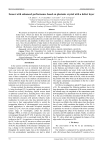
Sensor with enhanced performance based on photonic crystal with a defect layer
Статья научная
We propose an improved structure of an optical biosensor based on a photonic crystal with a defect layer, which can detect the concentration of organic contaminants in water by defect mode shift. We investigated 4 types of defective photonic crystals with different arrangements of layers inside the perfect photonic crystals and their impact on the performance of the sensor. The sensitivity and amplitude of defect mode were examined as a function of defect layer thickness. Also, the peculiarities of edge modes in the presence of defect layer were investigated. Finally, we obtained a characteristic equation to determine the wavelengths of defect modes for an arbitrary 1D photonic crystal with an isotropic defect inside.
Бесплатно
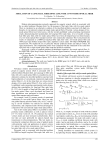
Simulation of a long-haul fiber optic link with a two-mode optical fiber
Статья научная
Modern telecommunication networks approach the capacity crunch, which is associated with the so-called nonlinear Shannon limit. So, the passage to fiber optic links with few-mode optical fibers is considered as an alternative solution of the described problem concerned with high nonlinearity of conventional commercial single-mode optical fibers. Presently, various designs of few-mode optical fibers have been known, with the recently published works presenting experimental results demonstrating their potentialities for long-haul fiber optic links. A lot of models of long-haul fiber optic links with few-mode optical fibers have been developed based on which features of a few-mode optical fiber transport network were numerically simulated. This work presents the results of simulation of a 6000-km long-haul fiber optic link with a two-mode optical fiber and 100-km-per-span Erbium doped fiber optic amplifiers system under 100 Gbps DP-DQPSK data transmission. We studied the use of particular linearly polarized modes and optical vortices for signal transmission. The computation results were compared with the simulation of the same fiber optic link with a single-mode optical fiber under the identical conditions.
Бесплатно
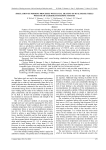
Статья научная
Features of laser-assisted warm forming of dual phase steel DP1000 are determined. Simulation of forming processes with local heating is performed. In the simulation procedure, the forming parameters of three dimensional forming were adapted to keep them within tolerable limits even in critical areas as well as identifying the localization and type of critical stresses. The capabilities of Abaqus were extended by use of the Python language to independently evaluate selected element strains, the position of deformed elements within the forming limit diagram and user-defined failure criteria. The simulation led to an adapted forming process permitting a significantly increased bulge forming depth by local laser heating of the forming zones. The developed simulation model shows a satisfactory conformity with experiments, performed using a fibre-coupled laser with a wavelength of 1070 nm and a maximum output power of 1500 W, and a servo bending press TRUMPF TruBend 7018. The required distribution of the laser beam energy can be obtained by using diffractive optical elements. The use of the model for technological operations opens up possibilities not only for the solution of the presented specific objective of laser assisted warm forming, but also for others applications.
Бесплатно
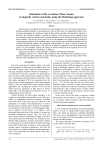
Simulation of the evolution of laser beams in impurity carbon nanotubes using the Madelung approach
Статья научная
The relevance of modeling the interaction of electromagnetic waves with various materials exhibiting nonlinear properties is increasing every year. In this work, we studied the dynamics of laser beams propagating in a medium of single-walled carbon nanotubes with impurities, placed in a dielectric. By multilevel impurity, we mean an impurity whose energy levels are separated from the conduction band and valence band in carbon nanotubes and lie inside the band gap of the dielectric medium. The novelty of this work lies in the development of a model for the evolution of electromagnetic radiation in the infrared range is constructed using the Madelung transform for the nonlinear Schrödinger equation, the numerical implementation of which is carried out using the smoothed-particle hydrodynamics. The influence of impurity parameters on the laser beam propagation in a given medium, namely, the energy of electron transitions from impurity levels to the first and second sublattices of nanotubes, is analyzed.
Бесплатно
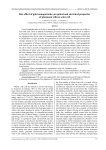
Статья научная
One of important tasks of the day is increasing the efficiency and decreasing the cost of the silicon solar cells. There is method of introducing of metal nanoparticles into solar cells to improve its absorption and reduce transmission as well as reflection coefficients. When metal nanoparticles are introduced into silicon solar cell, nanoplasmonic effect will occur. Nanoplasmonic effect lead to modification of light spectrum and generation of extra hot electrons. Nanoplasmonic effect strongly depends on size of nanoparticles. Therefore, in this paper, effect of gold nanoparticles size on properties of silicon solar cell has been studied by using simulation. Gold nanoparticles with sizes of 4 nm, 6 nm, 9 nm, 11 nm and 21 nm have been input into emitter region of silicon solar cell in order to use both of nanoplasmonic-electric and nanoplasmonic-optic effects for enhancing efficiency of silicon solar cell. Open circuit voltage didn’t change when size of nanoparticles has been changed from 4 nm to 11 nm. It dropped by 0.017 V when size of nanoparticles was 21 nm. Short circuit current has been maximum 6.7 mA/cm2 at nanoparticle size of 11 nm and minimum 3.1 mA/cm2 at nanoparticle size of 21 nm. It has been found from obtained results that gold nanoparticle with size of 11 nm affected significantly on properties of silicon solar cell. Besides, thickness of silicon solar cell can be decreased without dropping of efficiency by introducing gold nanoparticles. Because, main part of photons is absorbed near to metal nanoparticles inputted region.
Бесплатно
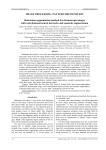
Статья
Melanoma skin cancer is one of the most dangerous forms of skin cancer because it grows fast and causes most of the skin cancer deaths. Hence, early detection is a very important task to treat melanoma. In this article, we propose a skin lesion segmentation method for dermoscopic images based on the U-Net architecture with VGG-16 encoder and the semantic segmentation. Base on the segmented skin lesion, diagnostic imaging systems can evaluate skin lesion features to classify them. The proposed method requires fewer resources for training, and it is suitable for computing systems without powerful GPUs, but the training accuracy is still high enough (above 95 %). In the experiments, we train the model on the ISIC dataset – a common dermoscopic image dataset. To assess the performance of the proposed skin lesion segmentation method, we evaluate the Sorensen-Dice and the Jaccard scores and compare to other deep learning-based skin lesion segmentation methods. Experimental results showed that skin lesion segmentation quality of the proposed method are better than ones of the compared methods.
Бесплатно
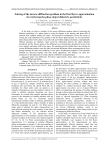
Статья научная
In the study we derive a solution of the inverse diffraction problem aimed at retrieving the dielectric permittivity of a phase object by using the changes in the intensity and phase shift of coherent laser radiation probing the object. The theoretical considerations involve the results of solving the scalar Helmholtz wave equation in the first Rytov approximation. For an axisymmetric phase object probed with a plane wave, both with and without radiation absorption, computationally efficient equations are obtained, which reveal the relationship between the object dielectric permittivity and the Fourier spectra of the diffracted wave characteristics described in terms of the wave intensity and phase shift in free space. The equations provide reliable data when solving the inverse diffraction problem, since they take into account diffraction effects accompanying the wave passage through the object and enhancing in free space. Fundamental properties of the equations obtained are discussed together with their broad applications. The findings can open new perspectives in the diagnostics of various objects in different wavelength ranges.
Бесплатно
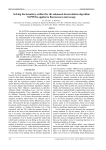
Статья научная
The SUPPOSe enhanced deconvolution algorithm relies in assuming that the image source can be described by an incoherent superposition of virtual point sources of equal intensity and finding the number and position of such virtual sources. In this work we describe the recent advances in the implementation of the method to gain resolution and remove artifacts due to the presence of fluorescent molecules close enough to the image frame boundary. The method was modified removing the invariant used before given by the product of the flux of the virtual sources times the number of virtual sources, and replacing it by a new invariant given by the total flux within the frame, thus allowing the location of virtual sources outside the frame but contributing to the signal inside the frame.
Бесплатно

